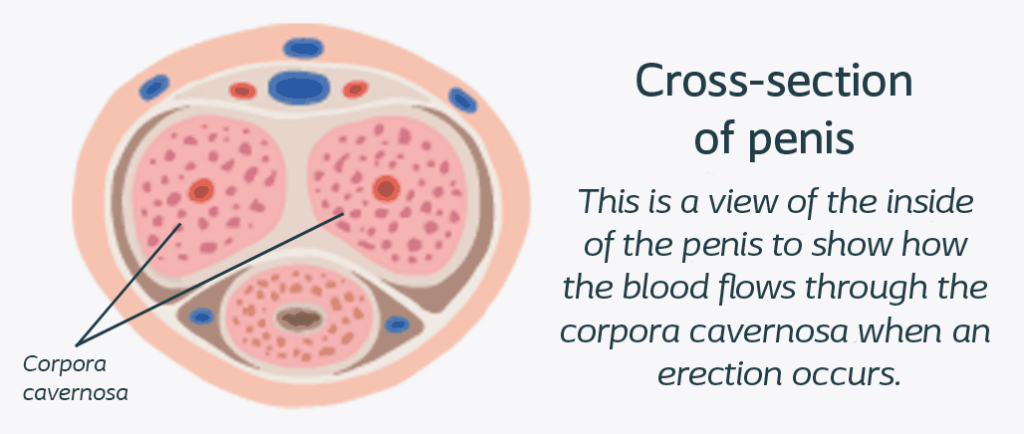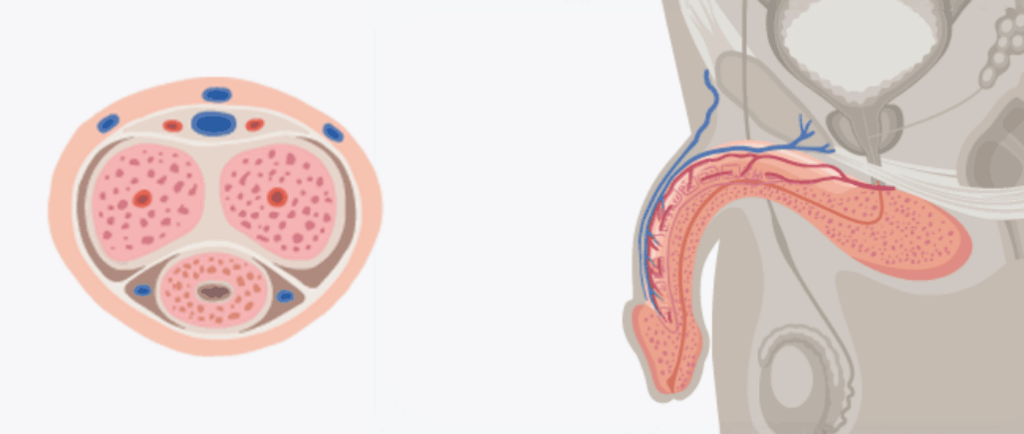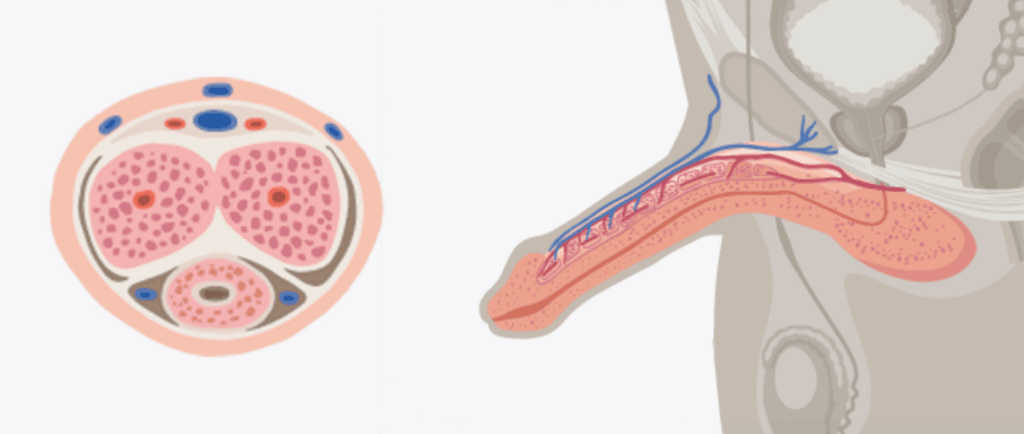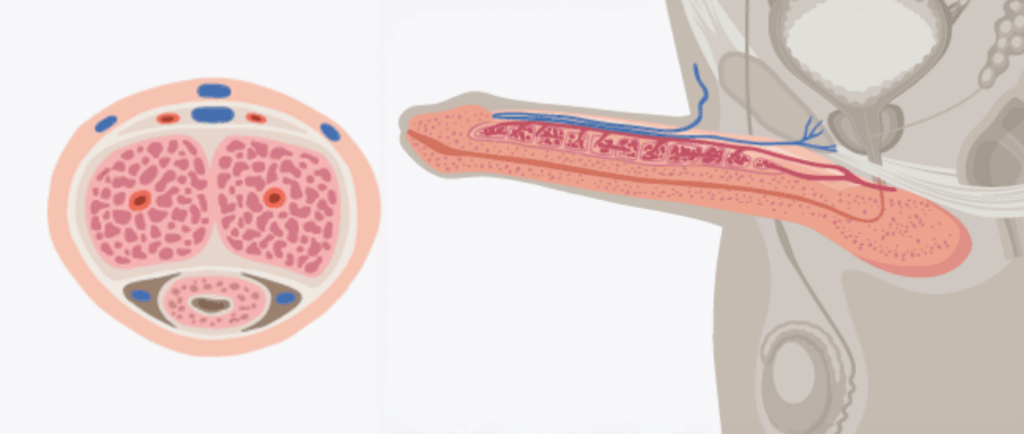How does an erection occur?
Let’s explore the science of an erection
You’ve been getting erections since puberty, but have you ever stopped to think about the reason why? Understanding the physiological process of getting an erection1 can help you look at erectile dysfunction (ED) in a whole new light.
Getting an erection1
Your penis houses two chambers called the corpora cavernosa. These chambers extend from the head of your penis deep into the pelvis. The insides of these chambers are made of spongy tissue that can gain blood volume and grow in size.

1
When you’re at work, hitting the gym, or running errands, the arteries supplying blood to your penis are only partially open. This provides the blood flow needed to keep your tissue healthy.

2
The magic starts to happen when you become aroused. Sexual stimulation and excitement cause the brain, nerves, heart, blood vessels and hormones to work together to produce a rapid increase in the amount of blood flowing to the penis. The blood becomes trapped and held in the corpora cavernosa.

3
Open arteries allow more blood to enter the corpora cavernosa. As the chambers rapidly fill with blood, they expand. The blood enters faster than it can leave through the veins. The veins get compressed, trapping blood in your penis. This chain reaction lets you achieve and maintain an erection.

4
When your brain stops sending signals that indicate sexual arousal, the hormonal response ends. Your arteries go back to their normal state and your penis returns to a flaccid state.

What causes erectile dysfunction?
Knowing how an erection occurs helps in understanding why they may not occur as expected. Erectile dysfunction may occur due to one of several medical conditions that decrease blood supply and nerve function. The cause can usually be identified, and proper treatment can help you and your partner return to a satisfying sex life.2

Have questions? Need support? We’re here to help!
Call or chat online with a member of our Coloplast Guided Support team. We can answer your questions and connect you with a local qualified urologist who specializes in ED.
References
1 MacDonald SM; Burnett AL. Physiology of Erection and Pathophysiology of Erectile Dysfunction. Urol Clin North Am. Nov 2021;48(4):513-525
2 Burnett AL, Nehra A, Breau RH, Culkin DJ, Faraday MM, Hakim LS, Heidelbaugh J, Khera M, McVary KT, Miner MM, Nelson CJ, Sadeghi-Nejad H, Seftel AD, Shindel AW. Erectile Dysfunction: AUA Guideline. J Urol. 2018 Sep;200(3):633-641.
PM-33072

